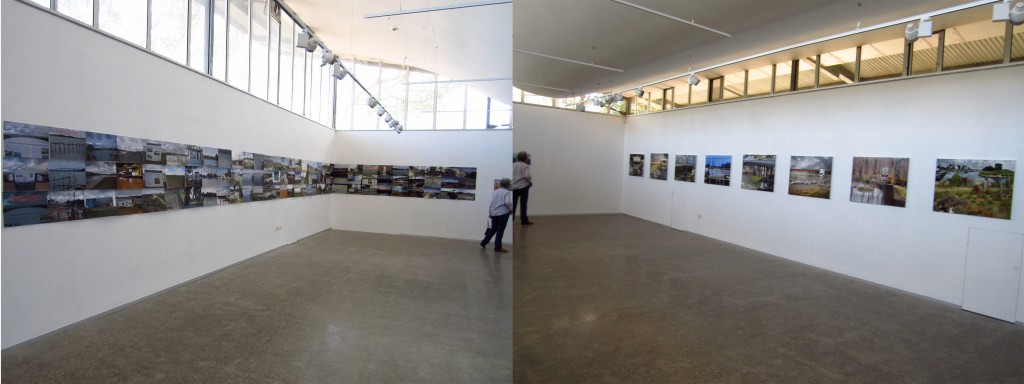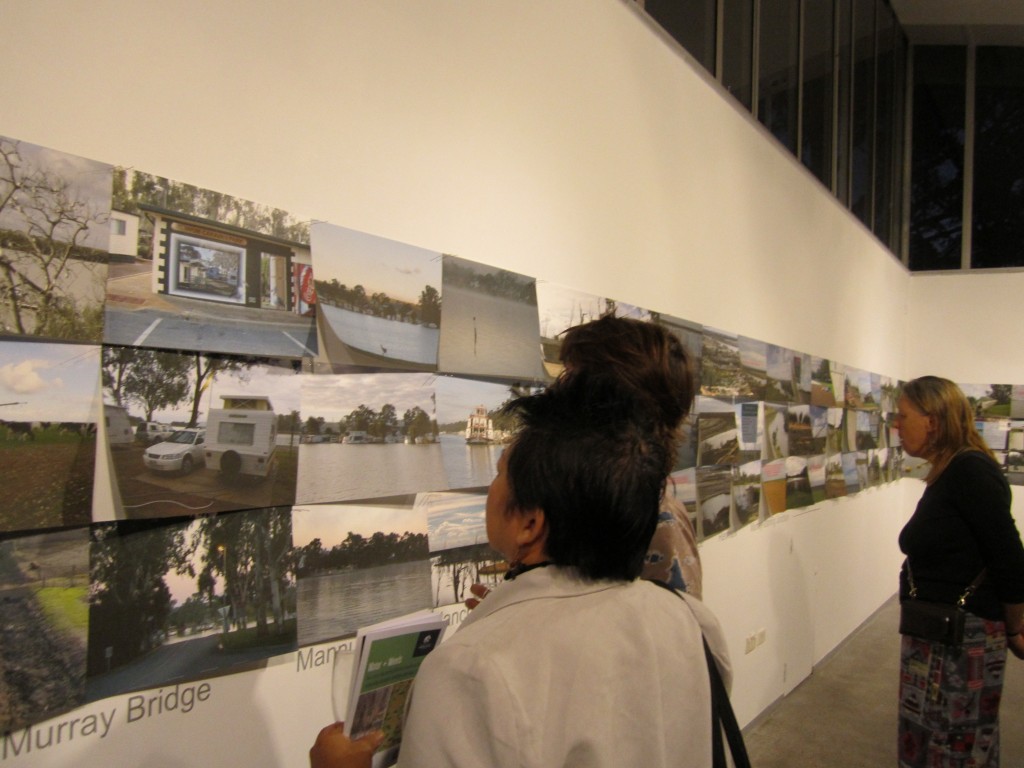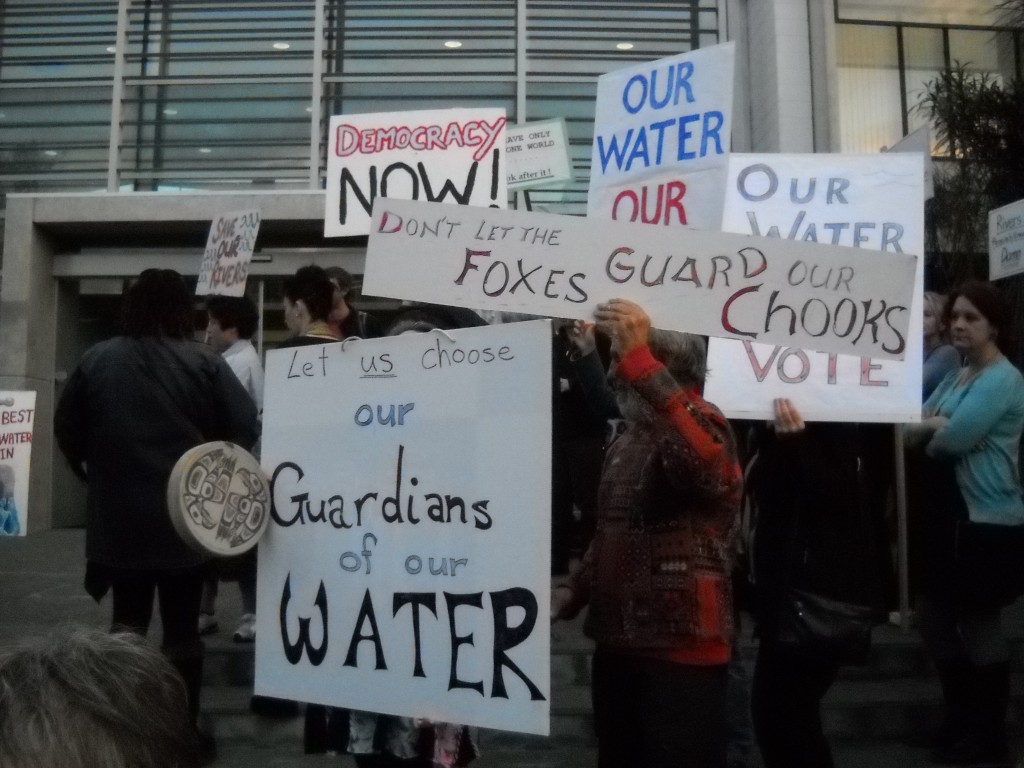
Artists for save our water artists Ramonda Te Maiharoa and Jane Zusters exhibition The Murray River matters opened the first April at the Newcastle University Gallery, GS Building, University Drive,Callaghan NSW 2308.The University Gallery is situated in a purpose built, award winning building designed in 1995 by Peter Stutchbury and was an ideal venue for the thought this provoking imagery . Digital montage artist Ramonda Te Maiharoa has lived in Australia for 40 years but has a crib at Moeraki where she meet Canterbury artist Jane Zusters in 2005. She understands how precious water is from having experienced firsthand water shortages in Brisbane and participated in he awa reo; rivertalk ,as did Jane.

In 2010 Ramonda Te Maiharoa and Jane Zusters journeyed from the Murray river mouth at Goolwa to the Hume Dam photographing their impressions of this ravaged wonderland as a cautionary tale facing their Canterbury rivers, which the NZ government wants to fast track irrigation schemes for more intensive farming.
Settler culture has created a vision in which the water of the Murray has been stored, regulated and allocated for human consumption and economic production. The relationships between people, water, clay, reeds, insects yabbies, birds, grasses, trees and the needs of the river have been discounted. The resulting over allocation of water and resulting destruction of freshwater ecology demands a rethink water management, law and policy.New Zealand is proposing to introduce the water market model that has been so problematic in Australia. How do you trade water that is not there or is miles away from where it has been sold.
The Murray Matters
How to explain that what is so beautiful is not acceptable? Nobody listens to angry people. The Murray’s dying appearance presents this conundrum; if the representation is ugly nobody wants to look. If the representation shows it’s beauty the viewer sees it’s pretty and understands it as such.
These works are an original and beautiful solution to this problem. They are unsettling; something is wrong, but the images please and nobody’s angry. They are a visual plea to investigate what is going on.
These are composite images; all truthful in their selected components; [as are the media’s selection of examples to support editorial positions]. The final images here [unlike the media] are metaphorically truthful but physically impossible; their recombination conveying the Murray’s devastation poetically and with gentle irony but without the imposition of a political agenda. These images speak for the Murray and in their paradoxical reconstructions, the predicament of human habitation and its depredations.
As in de Chirico’s paintings these images are ‘real” to the eye but closer inspection shows the improbability of the representation; as in 8 where the lack of water makes a mockery of the ferry sign [you can walk across the river]; the gasping fish is huge [a real but concrete one; no fish swim here]; the bridge high overhead and the buildings of Tocumwal right up to the rivers side. Should the river flow the buildings will drown. Should the river not flow: it is dead; the bridge redundant. The conflicting requirements of human and environment made concrete.
These images meanings are layered. At first the scenic beauty absorbs until the realisation of the impossibility of its physical nature dawns, forcing a re-reading. Within this individual components work as a mnemonic to change the meaning of the whole as in the pivoting irrigation atop the drained river [3] and in notices such as “Give Way To Stock” where there is no stock, no water and disconsolate pelicans. Look too at “Haynes Butchery” shop astride the land emerging from the mouth of the Murray [1]. Such devices are not just poetic irony; they point to conflicting interests as in 5 where the lock holds water the river, the irrigators, the birds and the trees need.
Beware of taking what you see for granted here; some aspects are subtle and conveyed as much by the visual finish of the image as in the recombination of parts. Some aspects are softly “watercolour” offering a romantic tinge; some so much so the effect is “ghostly” as in the sky of approaching history [1] where, as the water recedes the trees will move in: in turn dying in the dry – or in the water itself [4]. Also note that in others the treatment is hard edge; a “supereality” close to the photorealism of 1970’s painters such as Ralf Goings and Richard Estes in which the painters made mundane urban scenes beautiful with their precise, detailed “cleaned up” idealisations. Ramonda Te Maiharoa uses this finish to reveal how the landscape is itself “idealised” – in 7 which is bled of water through dams to feed a manmade “water world” for tourists and suburban development: an environment whose leached foreground [and accusatory expressions of the dogs] demonstrate.
Look, appreciate and consider the implications.
Venetia Sieveking


